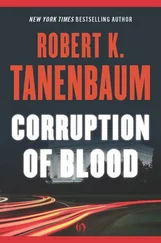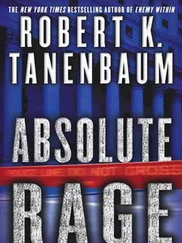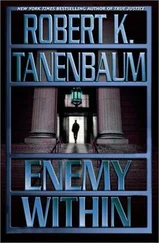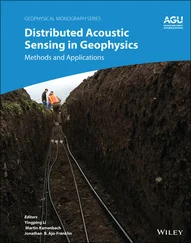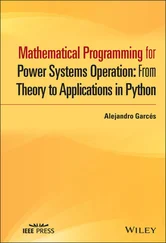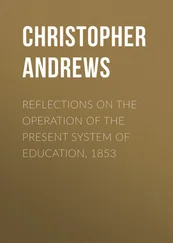Fig. 10-31.Parts of DFS. (a) File client machine. (b) File server machine.
Episode does cloning by copying all the file system data structures (i-nodes in UNIX terms) to the new partition, simultaneously marking the old ones as read only. Both sets of data structures point to the same data blocks, which are not copied. As a result, cloning can be done extremely quickly. An attempt to write on the original file system is refused with an error message. An attempt to write on the new file system succeeds, with copies made of the new blocks.
Episode was designed for highly concurrent access. It avoids having threads take out long-term locks on critical data structures to minimize conflicts between threads needing access to the same tables. It also has been designed to work with asynchronous I/O, providing an event notification system when I/O completes.
Traditional UNIX systems allow files to be any size, but limit most internal data structures to fixed-size tables. Episode, in contrast, uses a general storage abstraction called an a-nodeinternally. There are a-nodes for files, filesets, ACLs, bit maps, logs, and other items. Above the a-node layer, Episode does not have to worry about physical storage (e.g., a very long ACL is no more of a problem than a very long file). An a-node is a 252-byte data structure, this number being chosen so that four a-nodes and 16 bytes of administrative data fit in a 1K disk block.
When an a-node is used for a small amount of data (up to 204 bytes) the data are stored directly in the a-node itself. Small objects, such as symbolic links and many ACLs often fit. When an a-node is used for a larger data structure, such as a file, the a-node holds the addresses of eight blocks full of data and four indirect blocks that point to disk blocks containing yet more addresses.
Another noteworthy aspect of Episode is how it deals with crash recovery.
Traditional UNIX systems tend to write changes to bit maps, i-nodes, and directories back to the disk quickly to avoid leaving the file system in an inconsistent state in the event of a crash. Episode, in contrast, writes a log of these changes to disk instead. Each partition has its own log. Each log entry contains the old value and the new value. In the event of a crash, the log is read to see which changes have been made and which have not been. The ones that have not been made (i.e., were lost on account of the crash) are then made. It is possible that some recent changes to the file system are still lost (if their log entries were not written to disk before the crash), but the file system will always be correct after recovery.
The primary advantage of this scheme is that using it the recovery time is proportional to the length of the log rather than proportional to the size of the disk, as it is when the UNIX fsck program is run to repair a potentially sick disk in traditional systems.
Getting back to Fig. 10-31, the layer on top of the file systems is the token manager. Since the use of tokens is intimately tied to caching, we will discuss tokens when we come to caching in the next section. At the top of the token layer, an interface is supported that is an extension of the Sun NFS VFS interface. VFS supports file system operations, such as mounting and unmounting, as well as per file operations such as reading, writing, and renaming files. These and other operations are supported in VFS+. The main difference between VFS and VFS+ is the token management.
Above the token manager is the file exporter. It consists of several threads whose job it is to accept and process incoming RPCs that want file access. The file exporter handles requests not only for Episode files, but also for all the other file systems present in the kernel. It maintains tables keeping track of the various file systems and disk partitions available. It also handles client authentication, PAC collection, and establishment of secure channels. In effect, it is the application server described in step 5 of Fig. 10-27.
10.7.3. DFS Components in the Client Kernel
The main addition to the kernel of each client machine in DCE is the DFS cache manager. The goal of the cache manager is to improve file system performance by caching parts of files in memory or on disk, while at the same time maintaining true UNIX single-system file semantics. To make it clear what the nature of the problem is, let us briefly look at UNIX semantics and why this is an issue.
In UNIX (and all uniprocessor operating systems, for that matter), when one process writes on a file, and then signals a second process to read the file, the value read must be the value just written. Getting any other value violates the semantics of the file system.
This semantic model is achieved by having a single buffer cache inside the operating system. When the first process writes on the file, the modified block goes into the cache. If the cache fills up, the block may be written back to disk. When the second process tries to read the modified block, the operating system first searches the cache. Failing to find it there, it tries the disk. Because there is only one cache, under all conditions, the correct block is returned.
Now consider how caching works in NFS. Several machines may have the same file open at the same time. Suppose that process 1 reads part of a file and caches it. Later, process 2 writes that part of the file. The write does not affect the cache on the machine where process 1 is running. If process 1 now rereads that part of the file, it will get an obsolete value, thus violating the UNIX semantics. This is the problem that DFS was designed to solve.
Actually, the problem is even worse than just described, because directories can also be cached. It is possible for one process to read a directory and delete a file from it. Nevertheless, another process on a different machine may subsequently read its previously cached copy of the directory and still see the now-deleted file. While NFS tries to minimize this problem by rechecking for validity frequently, errors can still occur.
DFS solves this problem using tokens. To perform any file operation, a client makes a request to the cache manager, which first checks to see if it has the necessary token and data. If it has both the token and the data, the operation may proceed immediately, without contacting the file server. If the token is not present, the cache manager does an RPC with the file server asking for it (and for the data). Once it has acquired the token, it may perform the operation.
Tokens exist for opening files, reading and writing files, locking files, and reading and writing file status information (e.g., the owner). Files can be opened for reading, writing, both, executing, or exclusive access. Open and status tokens apply to the entire file. Read, write, and lock tokens, in contrast, refer only to some specific byte range. Tokens are granted by the token manager in Fig. 10-31(b).
Figure 10-32 gives an example of token usage. In message 1, client 1 asks for a token to open some file for reading, and also asks for a token (and the data) for the first chunk of the file. In message 2, the server grants both tokens and provides the data. At this point, client 1 may cache the data it has just received and read it as often as it likes. The normal transfer unit in DFS is 64K bytes.
A little later, client 2 asks for a token to open the same file for reading and writing, and also asks for the initial 64K of data to selectively overwrite part of it. The server cannot just grant these tokens, since it no longer has them. It must send message 4 to client 1 asking for them back.
Fig. 10-32.An example of token revocation.
As soon as is reasonably convenient, client 1 must return the revoked tokens to the server. After it gets the tokens back, the server gives them to client 2, which can now read and write the data to its hearts' content without notifying the server. If client 1 asks for the tokens back, the server will instruction client 2 to return the tokens along with the updated data, so these data can be sent to client 1. In this way, single-system file semantics are maintained.
Читать дальше

